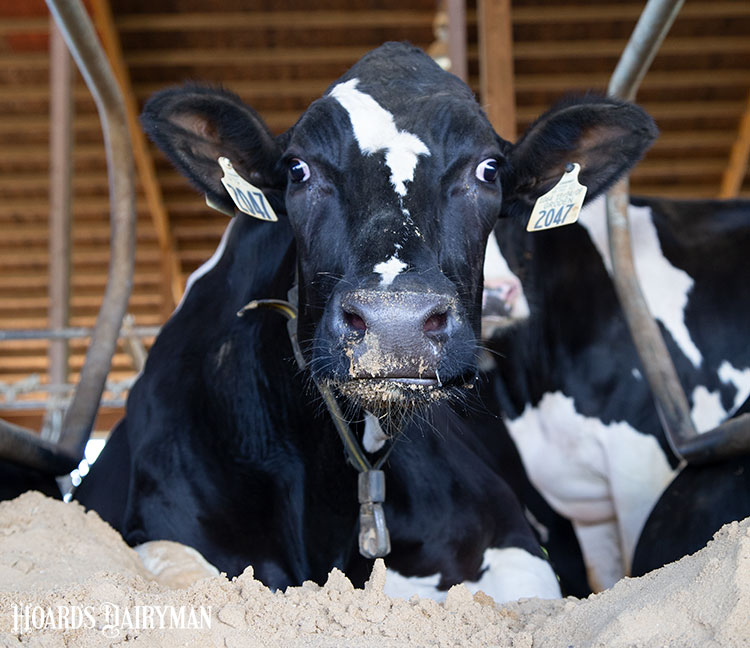
“What are we asking fresh cows to do?” asked Lindsay Ferlito, a regional dairy specialist, during a Cornell University “Transition cow Tuesdays” webinar.
She pointed out that we expect recently fresh cows to recover from calving while they start lactating. They need to up their dry matter and water intake, and they now spend parts of their day away from feed and water as they are milked. This group of animals also often experiences daily health checks that may require time standing in stalls or headlocks.
Ferlito said that the pen for these cows is hopefully close to the parlor, and the group should be sized appropriately so that cows are not spending too much time in the holding area. She also said that cows should not be kept in headlocks any longer than necessary. “We need to be efficient when we check these cows,” she said.
What else is important when it comes to housing for transition cows? Ferlito shared a few recommendations, starting with the resting space, as research has shown that resting time translates to more milk production.
First, she said to provide a good amount of clean, dry, and soft bedding, noting that lying time is greater in deep-bedded stalls. Plentiful bedding is also correlated with a lower incidence of lameness and fewer leg and hock injuries.
Stall size also plays a role. For freestalls, Ferlito shared that stalls should be at least 50 to 52 inches wide for cows and 48 inches wide for heifers. Stall length should be 8.5 to 10 feet. In a tie stall barn, the stall should be at least two times wider than the cow’s hip width, and at least 1.2 times longer than the cow’s rump height.
In the transition period, Ferlito recommended less than 100% stocking density at the stall level, with 80% being ideal. “Every cow in that pen should have at least one stall to lie down in,” she said. Prefresh and fresh cow facilities should be oversized by 140% of the average number of calvings per month to accommodate for months when there is a slug of fresh cows. A bedded pack barn should have at least 100 square feet of resting space per cow.
At the feedbuck, Ferlito said to provide 30 inches of eating space or more per cow. She noted that headlocks are a useful tool in reducing feedbunk displacements and aggressive interactions, especially if younger cows are housed with more mature ones. Note that if 24-inch headlocks are used in a transition cow pen, the stocking density must be reduced to 80% to 85% to still provide adequate space for these cows at the feedbunk.
Also important is enough space to drink. Ferlito said to provide at least 3.5 inches of linear water space per cow. Have multiple troughs per pen so that one boss cow can’t block others from drinking. Be sure waterers are clean and filling at the correct rate so that cows always have access to water.
The recommended width for stall alleys is 10 to 12 feet; for the feed alley, aim for 14 feet. Crossovers should be at least 12 feet wide, with additional space for waterers. Ferlito recommended a crossover every 25 stalls, reducing the distance cows need to walk to reach feed, water, and resting space.
Some animal movement will be necessary, but Ferlito said to avoid pen moves as much as possible to reduce the negative impacts of social stress. Aggressive interactions, reduced dry matter intake, and lower milk production can result while a new pecking order is established in a pen, and these negative impacts can last up to three days. “Try to limit pen moves, especially in that week leading up to calving,” Ferlito said.
The goals of successful transition cow housing are pretty simple, but the rewards – or consequences – will last the whole lactation.
“It is really important that we do what we can to give cows the opportunity to have access to stalls and feed in the fresh pen,” Ferlito noted.








